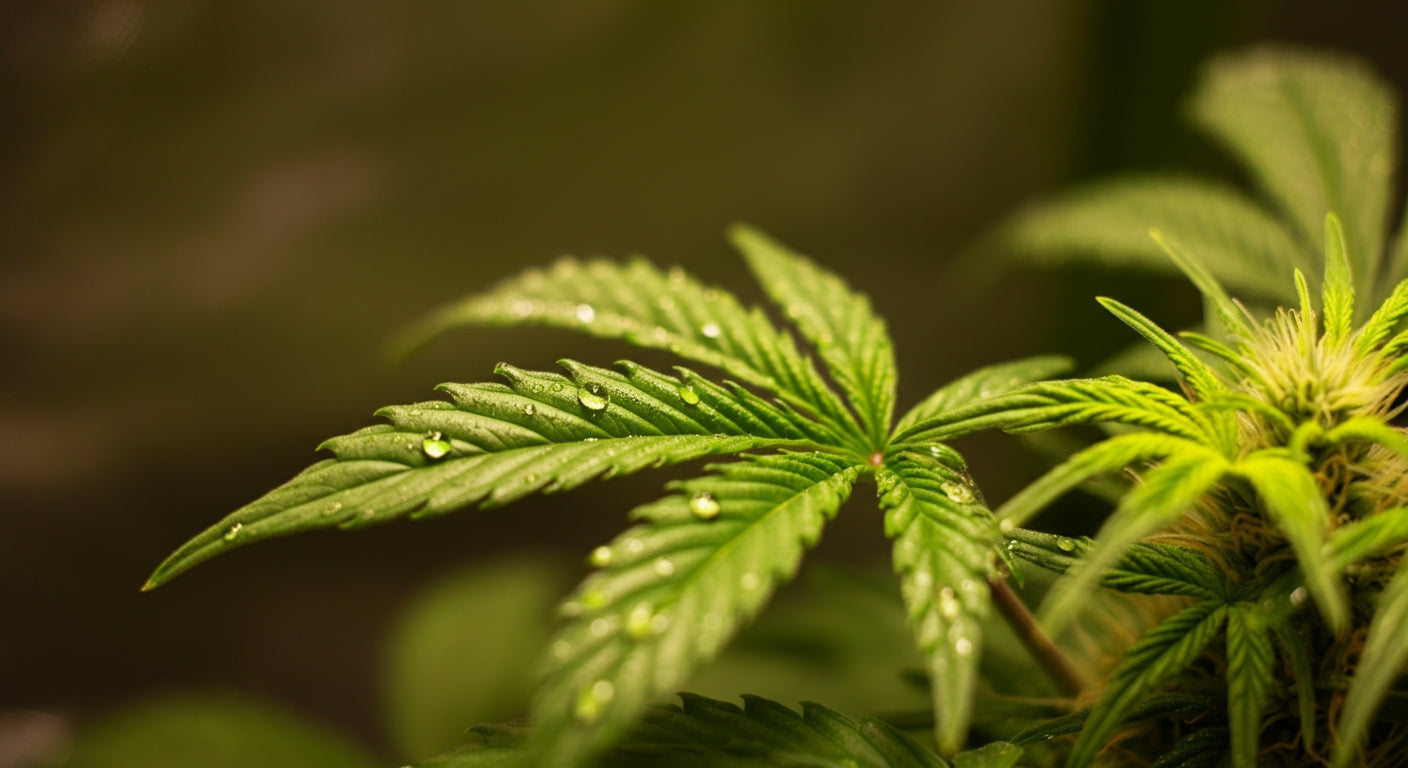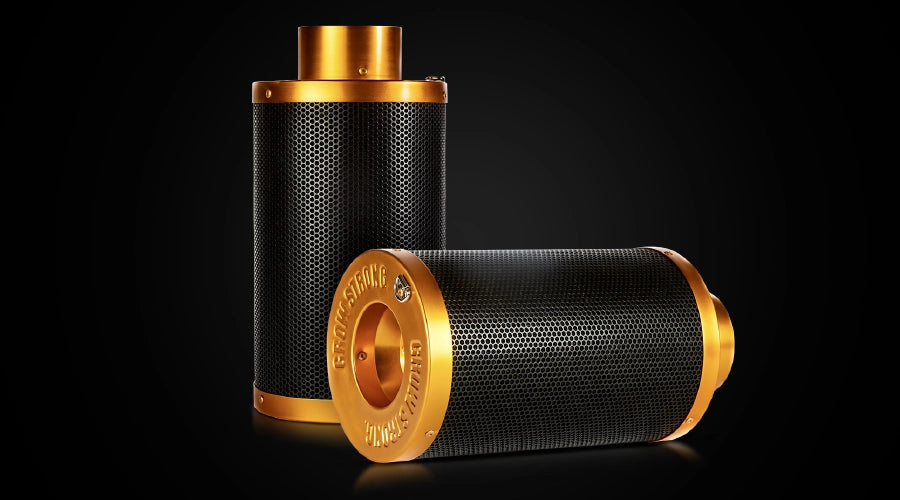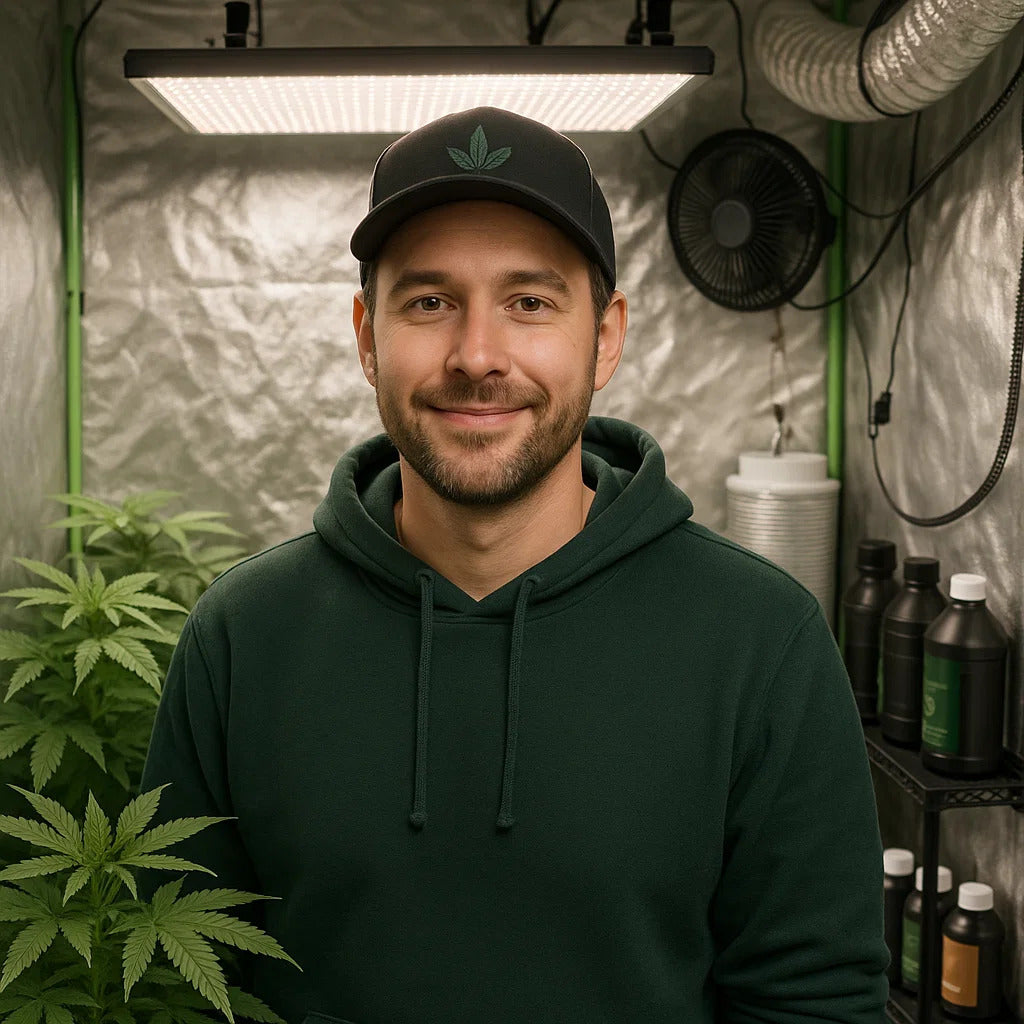
How to Bring Humidity Down in Grow Tent: Complete Guide
Why Controlling Humidity in Your Grow Tent is Critical
High humidity in a grow tent can quickly become a serious problem for indoor growers. Excess moisture creates the perfect environment for mold, mildew, and harmful pathogens that can damage or destroy your plants. If you're noticing condensation on tent walls, slow plant growth, or signs of fungal diseases, your humidity levels are likely too high.
In this comprehensive guide, we'll explore effective methods to reduce humidity in your grow tent, from budget-friendly solutions to advanced equipment setups.
Understanding Optimal Humidity Levels for Different Growth Stages
Before attempting to lower humidity, it's important to understand what levels you should be targeting. Different growth stages require different humidity levels for optimal development:
| Growth Stage | Ideal Humidity Range |
|---|---|
| Seedling/Clone | 65-70% |
| Vegetative | 50-70% (decreasing as plants mature) |
| Early Flowering | 40-50% |
| Late Flowering | 30-40% |
During the flowering stage, maintaining lower humidity becomes especially critical to prevent mold and bud rot. For most mature plants, keeping relative humidity below 50% is recommended to prevent moisture-related problems.
10 Effective Methods to Reduce Humidity in Your Grow Tent
1. Improve Ventilation with Proper Exhaust Setup
Proper air exchange is your first line of defense against high humidity. An effective ventilation system removes moist air and replaces it with drier air from outside the tent.
How to implement:
- Install an appropriate-sized exhaust fan at the top of your tent where humid air naturally rises
- Connect the exhaust fan to a Gorilla Carbon Filter for odor control while maintaining airflow
- Position intake holes or fans at the bottom of the tent for fresh air
- Ensure your exhaust system creates negative pressure (tent walls slightly pulling inward)
Pro tip: For maximum effectiveness, size your exhaust fan to exchange all the air in your tent every 1-3 minutes. The formula is: Tent volume (cubic feet) ÷ desired exchange rate (minutes) = minimum CFM needed.

2. Use a Dehumidifier
A dehumidifier is the most direct solution for humidity control, especially in larger grow tents or when environmental conditions are consistently humid.
How to implement:
- For small tents (2x2 to 4x4): Use a compact dehumidifier rated for 20-30 pints per day
- For medium to large tents: Use a 50+ pint dehumidifier
- Position the dehumidifier to allow for good air circulation
- Set the dehumidifier to maintain your target humidity level (40-50% for flowering plants)
Pro tip: If space inside your tent is limited, you can place a larger dehumidifier outside the tent in the same room. This works well if you keep the room closed and use the tent's intake to draw in the dehumidified air.
3. Adjust Watering Practices
Overwatering is a major contributor to excessive humidity in grow tents. Water that isn't used by the plants eventually evaporates into the air.
How to implement:
- Water plants only when the top 1-2 inches of soil are dry
- Water in the morning so moisture has time to evaporate during the day
- Avoid getting water on leaves or tent surfaces
- Use fabric pots that promote better drainage and allow moisture to evaporate from the sides
Pro tip: Consider bottom-watering techniques where plants absorb exactly what they need, reducing excess water in the growing medium.
4. Increase Temperature Slightly
Warm air holds more moisture than cool air. By slightly increasing the temperature, you can reduce the relative humidity without removing any actual moisture from the air.
How to implement:
- Raise the temperature by 2-3°F during high humidity periods
- Maintain temperatures between 75-85°F during lights-on periods
- Use a thermometer/hygrometer to monitor both temperature and humidity
Pro tip: This method works best for minor humidity adjustments. Don't exceed your plants' temperature tolerance just to lower humidity.
5. Remove Excess Foliage
Dense plant foliage traps moisture and restricts airflow, creating humid microclimates within your canopy.
How to implement:
- Remove lower leaves that receive little light
- Thin out excessive foliage to improve air circulation
- Use low-stress training (LST) techniques to keep an open, even canopy
- Always prune before watering to avoid excess humidity buildup
Pro tip: Gradual, selective pruning is better than heavy defoliation, which can stress plants and temporarily increase humidity as the plants release moisture.
6. Use Moisture-Absorbing Products
For small grow tents or as a supplementary measure, moisture absorbers can help reduce humidity levels.
How to implement:
- Place DampRid, silica gel packets, or rock salt in shallow containers
- Position these throughout the tent, especially in corners with less airflow
- Replace or regenerate these materials regularly as they become saturated
Pro tip: This is a budget-friendly solution that works best in conjunction with other methods or for minor humidity issues.
7. Control Humidity of Intake Air
If the air being drawn into your tent is already humid, your ventilation system will struggle to reduce humidity levels.
How to implement:
- Ensure intake air comes from a cool, dry source
- Avoid drawing air from humid basements or laundry areas
- Consider dehumidifying the room where the tent is located
- Use an air conditioner in the room to provide cooler, drier intake air
Pro tip: Measure the relative humidity of your intake air source. If it's above 50%, address this issue before focusing on in-tent solutions.
8. Optimize Grow Light Usage
Different types of grow lights contribute differently to humidity levels. HID lights like HPS generate significant heat, which can help reduce humidity but may require more cooling.
How to implement:
- Consider using LED grow lights, which produce less heat and require less watering
- If using HPS/MH lights, ensure proper ventilation to remove the heat where needed
- Position lights at the appropriate height to provide even coverage and heat distribution
Pro tip: Carefully balance light type with other environmental factors. While HPS lights can help reduce humidity, they also increase watering needs, which can add moisture back into the environment.
9. Use Air Conditioning
For serious humidity issues, especially in larger grow operations, air conditioning provides dual benefits of cooling and dehumidification.
How to implement:
- Install a properly sized AC unit for the space
- Position it to cool the intake air before it enters the tent
- Clean filters regularly to maintain efficiency
- Consider a mini-split system for more precise control
Pro tip: Air conditioning is particularly effective in hot, humid climates where both temperature and humidity need to be managed simultaneously.
10. Install a Vapor Pressure Deficit (VPD) Controller
For advanced growers, a VPD controller can automate the relationship between temperature and humidity for optimal plant growth.
How to implement:
- Install environmental controls that monitor both temperature and humidity
- Program the controller to maintain ideal VPD levels for your specific plants
- Integrate with fans, dehumidifiers, and heating/cooling systems
- Regularly calibrate sensors to ensure accuracy
Pro tip: VPD controllers represent the most precise way to manage grow tent environments but require a higher initial investment and some technical knowledge to set up properly.
Common Mistakes to Avoid When Reducing Humidity
1. Sealing the Tent Too Tightly
While grow tents should be closed to maintain a controlled environment, they should never be completely sealed without active air exchange.
Solution: Always ensure proper ventilation with intake and exhaust ports open and fans running.
2. Overwatering
One of the most common causes of high humidity is simply giving plants more water than they need.
Solution: Follow a consistent watering schedule based on the specific needs of your plants and growing medium. Check soil moisture before watering.
3. Overcrowding Plants
Too many plants in a small space restrict airflow and increase transpiration, leading to higher humidity.
Solution: Follow recommended plant spacing for your tent size or reduce the number of plants to improve air circulation.
4. Neglecting the Basics Before Buying Equipment
Many growers immediately purchase expensive dehumidifiers before addressing simple issues that could solve their humidity problems.
Solution: Start with proper ventilation, watering practices, and plant management before investing in specialized equipment.
Building an Effective Humidity Control System with Gorilla Grow Tent Products
For a complete humidity management solution, combining the right equipment makes all the difference. Here's how to build an effective system using quality components:
The Foundation: Quality Grow Tent
A properly designed grow tent like those from Gorilla Grow Tent provides the controlled environment necessary for managing humidity. The heavy-duty construction prevents unwanted air leaks while providing proper ports for ventilation equipment.
Essential Ventilation: Carbon Filter and Exhaust
The Gorilla Carbon Filter paired with an appropriate exhaust fan forms the core of your humidity control system. Beyond removing odors, this setup ensures constant air exchange to prevent humidity buildup.
Choose the right size based on your tent dimensions:
- 4" filter and fan for 2x2 to 3x3 tents
- 6" filter and fan for 4x4 to 5x5 tents
- 8" filter and fan for larger tents
Supplementary Equipment
Depending on your specific situation, add these components as needed:
- Oscillating fans for air circulation
- Dehumidifier sized for your space
- Temperature/humidity controller for automation
- Moisture absorbers for problem areas
Monitoring and Maintaining Proper Humidity Levels
Successful humidity management requires ongoing attention and adjustments. Here are best practices for long-term success:
Regular Monitoring
Install digital hygrometers at canopy level to accurately track humidity. Many growers use multiple sensors to identify problem areas within the tent.
Seasonal Adjustments
Humidity challenges change with the seasons. Be prepared to adjust your approach:
- Summer: Focus on dehumidification and cooling
- Winter: Balance heating needs with humidity control
- Spring/Fall: Watch for rapid weather changes that affect indoor conditions
Maintenance Schedule
Develop a regular maintenance routine:
- Clean or replace carbon filter pre-filters every 1-3 months
- Check for dust buildup on fan blades that reduces efficiency
- Verify sensor accuracy with calibration tests
- Inspect ducting for leaks or condensation
Conclusion: A Balanced Approach to Humidity Control
Successfully managing humidity in your grow tent requires a multi-faceted approach. Start with fundamental growing practices like proper watering and plant spacing, implement effective ventilation with quality equipment like Gorilla Carbon Filters, and add specialized dehumidification as needed.
Remember that the goal isn't simply to achieve the lowest possible humidity, but rather to maintain the optimal range for your plants' current growth stage. With the techniques and equipment outlined in this guide, you'll be able to create the perfect environment for healthy, productive plants regardless of external conditions.
By investing time in understanding and controlling humidity, you're addressing one of the most critical factors in successful indoor growing – one that can make the difference between a disappointing harvest and exceptional results.

Lena Myles
I'm a mushroom enthusiast and home cook based in Oregon. I'm passionate about foraging and creating fungi-focused recipes, especially delicious, plant-based dishes using gourmet mushrooms like trumpet, shiitake, and oyster. When I’m not in the kitchen, you’ll usually find me wandering the woods in search of new wild flavors.


